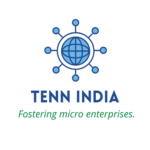PMEGP : A Catalyst for Economic Growth

PMEGP – PM’s Employment Generation Program
Objectives of the PMEGP
The primary objectives of the PMEGP are:
- Generation of Employment Opportunities: The scheme aims to create sustainable employment for a significant portion of the unemployed and underemployed population, particularly in rural and semi-urban areas.
- Promotion of Entrepreneurship: By facilitating financial assistance and support, the PMEGP encourages individuals to embark on entrepreneurial ventures, thereby promoting a culture of self-reliance and innovation.
- Reduction of Urban Migration: By providing viable employment opportunities in rural areas, the scheme seeks to curb the migration of people from villages to cities in search of jobs, thereby alleviating urban congestion and related socio-economic issues.
- Development of Micro-Enterprises: The scheme focuses on nurturing and developing micro-enterprises across various sectors, contributing to balanced regional development.
Structure and Implementation
The PMEGP is implemented by the Ministry of Micro, Small, and Medium Enterprises (MSME) through two major agencies: the Khadi and Village Industries Commission (KVIC) at the national level and State Khadi and Village Industries Boards (KVIBs) along with District Industries Centres (DICs) at the state level. The scheme is a credit-linked subsidy program, wherein financial assistance is provided to entrepreneurs in the form of margin money subsidy on the bank loans they secure for setting up their enterprises.
Eligibility Criteria
To avail of the benefits under PMEGP, applicants must fulfill certain eligibility criteria:
Age: The minimum age is 18 years.
Education: At least an eighth-grade pass is required for projects costing above Rs. 10 lakh in the manufacturing sector and above Rs. 5 lakh in the service sector.
Entities: Individuals, Self-Help Groups (SHGs), Cooperative Societies, and charitable trusts are eligible to apply.
No Prior Assistance: Beneficiaries should not have availed of any Government subsidy under any other scheme.
Financial Assistance
The financial structure of PMEGP is designed to support diverse entrepreneurial ventures:
Bank Loan: Comprises 90% of the project cost for general category beneficiaries and 95% for special categories, including SC, ST, OBC, minorities, women, ex-servicemen, and physically challenged individuals.
Margin Money Subsidy: The subsidy ranges from 15% to 35% of the project cost, depending on the beneficiary’s category and the location of the project (urban/rural).
The maximum project cost allowed under the scheme is Rs. 25 lakh for the manufacturing sector and Rs. 10 lakh for the service sector.
Impact and Achievements
Since its inception, the PMEGP has made a remarkable impact on employment generation and entrepreneurship development in India. The scheme has successfully harnessed the latent entrepreneurial potential of individuals, particularly in rural areas, contributing to the overall economic development of the country.
Employment Generation
The PMEGP has been instrumental in creating millions of jobs by facilitating the establishment of micro-enterprises across various sectors, including manufacturing, services, and traditional industries. By providing financial assistance and support, the scheme has enabled unemployed youth to transform into job creators, thereby addressing the issue of unemployment at its roots.
Promotion of Inclusive Growth
One of the significant achievements of the PMEGP is its contribution to inclusive growth by providing opportunities to marginalized sections of society, including women, SCs, STs, and minorities. The scheme has empowered these groups by enabling them to participate actively in the economic mainstream, thus fostering social equity and justice.
Regional Development
The scheme has played a crucial role in promoting balanced regional development by focusing on rural and semi-urban areas. By encouraging the establishment of micro-enterprises in these regions, the PMEGP has contributed to reducing regional disparities and promoting economic stability.
Challenges and Opportunities
Despite its achievements, the PMEGP faces several challenges that need to be addressed to enhance its effectiveness and reach.
Challenges
- Awareness and Accessibility: A significant challenge is the lack of awareness about the scheme among potential beneficiaries, especially in remote and rural areas. Additionally, the procedural complexities involved in availing of the benefits deter many eligible candidates.
- Skill Development: While the scheme provides financial assistance, there is a need for comprehensive skill development programs to equip entrepreneurs with the necessary skills and knowledge to manage their enterprises successfully.
- Market Access: Ensuring market access for products and services generated by micro-enterprises is essential for their sustainability. Limited access to markets can hinder the growth and profitability of these enterprises.
- Effect of personal and or consumer loans: CIBIL score based on the past personal and or consumer loans of the applicant will have an impact on the applications under PMEGP. Applicants should be properly educated on the impact of adverse credit rating of the Promoters.
- Monitoring and Evaluation: Effective monitoring and evaluation mechanisms are crucial to assess the scheme’s impact and address any implementation gaps. Regular counselling sessions to the budding entrepreneurs from Bankers, Mentors and subject matter experts will yield good results.
Opportunities
- Digital Transformation: Leveraging digital platforms and technology can enhance the scheme’s outreach and efficiency. Online portals and mobile applications can simplify application processes and facilitate better communication and support.
- Collaboration with NGOs and Corporates: Partnering with NGOs and corporate entities can help in expanding the scheme’s reach and effectiveness. These collaborations can provide additional resources, expertise, and market linkages to entrepreneurs.
- Focus on Innovation and Sustainability: Encouraging innovative and sustainable business models can enhance the long-term viability of micro-enterprises and contribute to environmental sustainability.
Review
The PMEGP is a cornerstone initiative that reflects the Government’s commitment to promoting self-employment and entrepreneurship in India. By addressing unemployment and fostering economic growth, the PMEGP has empowered individuals to become catalysts for change in their communities.
While challenges remain, the scheme’s potential for transforming India’s socio-economic landscape is immense. Through continuous efforts to enhance awareness, accessibility, and support, the PMEGP can continue to drive inclusive and sustainable development in the years to come.
